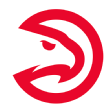NBA trade grades - Atlanta sends Dejounte Murray to New Orleans ...
Kevin Pelton, ESPN Senior WriterJun 29, 2024, 01:13 PM
Close
Co-author, Pro Basketball Prospectus series Formerly a consultant with the Indiana Pacers Developed WARP rating and SCHOENE systemThe Atlanta Hawks were one of the most intriguing teams of the offseason with the No. 1 pick in the 2024 NBA draft on top of a backcourt featuring Trae Young and Dejounte Murray.

With several options in front of them heading into the draft, the Hawks kept the No. 1 pick and selected Zaccharie Risacher out of France. The next question for the franchise was the future of guards.
Atlanta removed the mystery on Friday evening as it sent Murray to the New Orleans Pelicans for guard Dyson Daniels, forward E.J. Liddell, center Larry Nance Jr. and first-round picks in 2025 (via the Los Angeles Lakers) and 2027 (via the worst pick between the Milwaukee Bucks and Pelicans).
The move will shake up an already crowded Western Conference as New Orleans attempts to improve on an eighth seed and first-round sweep. The Hawks will also get a reset with Young back and Risacher ready to make his debut.
ESPN Insider Kevin Pelton hands out trade grades for both teams.
Pelicans trade three players, two firsts for MurrayAtlanta Hawks get:
G Dyson Daniels F E.J. Liddell C Larry Nance Jr. 2025 first-round pick (via Lakers) 2027 first-round pick (via worse of Bucks or Pelicans)
New Orleans Pelicans get:
G Dejounte Murray
Atlanta Hawks grade: B+
The Hawks knew they had to trade one of their guards this summer after finding last season that Murray and Young were far less effective together than on their own running a team.
I would have preferred to keep Murray, who signed a below-market extension last year that pays him an average of $27.8 million, less than the average point guard in the current market. Immanuel Quickley, for example, agreed to a deal Friday with the Toronto Raptors that will pay him an average of $35 million over the next five seasons.
At the same time, other teams also have access to Atlanta's cap sheet and may have valued Murray more than Young in the trade market for the same reasoning. If the Hawks were going to deal Murray, this is a strong return, netting them two first-round picks, a recent lottery pick and getting them out of the luxury tax.
Daniels is the most interesting part of this trade from Atlanta's standpoint. The No. 8 overall pick two years ago, Daniels is 21 now and has impressed with his defensive versatility and playmaking. If Daniels can improve his shooting after making just 31% of his NBA 3s to date, he could be a long-term starter. His inability to develop more under former Pelicans assistant Fred Vinson, one of the league's most respected shooting coaches, is a concern in that regard. So, too, is Daniels' 65% accuracy at the free throw line.

At a minimum, Daniels should upgrade the Hawks' backcourt depth now that they can't toggle between Young and Murray at point guard. If Daniels hits, however, it could effectively give Atlanta three first-round picks out of this trade -- as many as the Hawks gave up to get Murray, along with swap rights in 2026.
The picks Atlanta got in return don't have nearly as much upside as the unprotected ones the Hawks sent the San Antonio Spurs for Murray. Although the Lakers' 2025 pick was valuable enough that New Orleans opted to pass on this year's No. 17 pick in order to defer it to next season, it probably won't be a high lottery pick unless injuries hit the 2024-25 Lakers. And Atlanta getting the weaker of two picks (either the Pelicans' own or one from Milwaukee) in 2027 makes that a middling first-rounder at best.
Replacing the pick value sent out for Murray was never a realistic goal for the Hawks in re-trading him. In hindsight, that move looks overzealous, with Atlanta expecting the first-rounders going to the Spurs to be late in the first round because a Murray-Young core was going to produce deep playoff runs. Instead, the Hawks reached the 2023 playoffs through the play-in and lost in the first round before finishing 10 games below .500 last season.
With Atlanta projected in the luxury tax after jumping up to the No. 1 pick, something had to give. This deal saves the Hawks more than $5 million in 2024-25 salary, and turning Murray into three players also means fewer roster spots to fill out.
Nance could also be a contributor in 2024-25, though it will be interesting to see Atlanta's plans for him. Nance played almost exclusively at center last season and now joins a team with Clint Capela and Onyeka Okongwu at the position. The Hawks could look to use Nance and Okongwu together off the bench since both are versatile defensively, or there may be more moves in store.
No trade Atlanta was going to make would entirely erase the missteps that led the Hawks to the point of having an expensive roster that was producing below-average results on the court. This trade at least resets Atlanta's financial and pick outlook, offering the Hawks more options going forward.
New Orleans Pelicans grade: B+

This may yet be an 'A' trade for the Pelicans, who dramatically upgraded their shot creation without giving up any of their own future first-round picks. However, there are still questions for New Orleans to answer.
Primarily, we need to know what happens with forward Brandon Ingram, who no longer fits either in the Pelicans' starting five or in their salary structure. New Orleans may need to save money in an Ingram trade to avoid pushing into the luxury tax to add a center with Nance in Atlanta and Jonas Valanciunas a free agent.
I'm also curious about the Pelicans' vision for CJ McCollum. The optimized New Orleans starting five probably has Herb Jones and Trey Murphy III on the wings flanking Murray and Zion Williamson, but a reserve role may be a tough sell to McCollum, who last came off the bench in April 2015 while in his second NBA season with the Portland Trail Blazers.
That's a lot of questions, all of which New Orleans may have already answered internally. The rest of us must wait to see how this roster comes together.
For now, let's consider how potent Murray could be with the Pelicans. An All-Star when he last started at point guard for San Antonio in 2021-22, Murray improved on those stats when Young was out of the lineup last season, averaging 25.1 PPG and 9.1 APG. The Hawks went 14-14 in those games, albeit largely in the final two months of the schedule when opposition levels can vary.
As compared to when Murray was with the Spurs, he's leveled up as a 3-point shooter. Last season's 2.6 made 3-pointers per game were easily a career high for Murray, who'd never previously averaged more than 1.8. That came on a difficult shot diet.
According to Second Spectrum tracking data on NBA Advanced Stats, Murray took 3.3 pull-up 3-point attempts per game, making them at a 32% clip. On easier catch-and-shoot attempts, Murray shot a robust 39%. That's good news, because even if Ingram is playing elsewhere, New Orleans surely will want Murray to space the floor for Williamson at times.
The downside is Murray no longer bringing the effort level on defense that made him a two-way contributor in San Antonio. With Jones as a defensive stopper, the Pelicans are well equipped to use Murray on secondary options, where his size will certainly be an upgrade over the smaller McCollum. Murray is big enough that we'll probably see him play with McCollum at times, though those backcourts could be challenged defensively.
Down the road, Murray's contract should be favorable for New Orleans even if he opts not to waive any of a 15% trade bonus. In the short term, adding $5 million in salary and creating two extra roster spots puts the Pelicans in a bind trying to add to first-round pick Yves Missi at center.
Including Murray's trade bonus, New Orleans would stand $9.2 million below a hard cap at the lower luxury-tax apron with 11 players under contract. Worse yet, the Pelicans are just $3.3 million below the tax line. New Orleans is one of two franchises, along with the Charlotte Hornets, that has never paid the tax.
All of that points to the necessity of the Pelicans dealing Ingram, possibly in exchange for a veteran starting center. With Ingram due a new contract after this season and surely seeking a raise of his current $36 million salary, New Orleans can no longer afford him. And Murray replaces much of the shot creation the Pelicans once relied on Ingram to provide. An Ingram trade seems a matter of when, not if.
Once that deal happens, we'll have a lot better sense of how well New Orleans did in the full offseason. At this point, landing Murray without giving up a high-upside pick feels like a solid step forward.















































